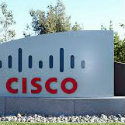Improvement reflects the company's transition to the New IP.

Service providers opened their wallets for Cisco for the first time in a long time this past quarter. The networking vendor reported 2% revenue growth from SPs in its fourth quarter on an earnings call Wednesday afternoon, and is "cautiously optimistic" about future outlook, new CEO Chuck Robbins said.
Cisco made internal changes to engineering, services and sales to better serve SP needs, which were a big contributor to the higher revenue, said Robbins in his first quarterly earnings call since taking over the CEO position from John Chambers three weeks ago. (See Robbins Succeeds Chambers as Cisco Changes CEOs and Troubled Cisco Looks to 'Bust Silos' )
He also attributed the growth in revenue to Cisco's "architectural vision alignment with most of our customers."
Growth was balanced among various parts of the service provider business, including data center, collaboration, high performance computing, routing and SP mobility, Robbins said.
As for the second half of calendar 2015, "we have not modeled any significant increase [for SP capex] and if it does occur, we'll certainly benefit from that," Robbins said. "Again, we're cautiously optimistic in this space. "
For the fiscal fourth quarter of 2015 ending July 25, Cisco reported $12.8 billion revenue, up 4% year-over-year. Earnings-per-share was $0.45 GAAP and $0.59 non-GAAP.
Annual revenue was $49.2 billion, up 4% year-over-year, with earnings per share of $1.75.
For the first quarter of fiscal 2016, Cisco expects to see 2% to 4% growth year-over-year, and non-GAAP earnings per share of $.55 to $.57.
Cisco traded at $29, up 3.94% after hours Wednesday, after closing at $27.90, down .12% for the day.
Strong growth in deferred revenue "shows we are very effectively driving our business to a more predicable software-based business model, at the same time as growing revenue and earnings," Robbins said.
The results reflect a strong shift to the New IP by Cisco's customers, with significant growth in both security and SDN. Cisco also sees opportunities in NFV. Cisco saw 26% growth in deferred revenue for security software subscriptions in the fourth quarter. "Assuming we continue to execute, I'm confident we'll see double-digit growth in the back half of this year," Robbins said.
Cisco saw strong demand for its SDN products, the Nexus 3000 and Nexus 9000 switches and Application Centric Infrastructure (ACI) software, with $438 million quarterly revenue, more than doubling annual quarterly growth, and more than 50% sequential growth. Cisco added more than 1,400 new customers for the Nexus 9000, with 4,100 total, and 26 of the company's 28 largest enterprise customers are now Cisco 9000 customers, with 30% new in the fourth quarter, Robbins said. (See Cisco Beefs Up Network Automation Portfolio.)
Hyper-cloud providers such as Amazon.com Inc. (Nasdaq: AMZN), Google (Nasdaq: GOOG), Facebook and Microsoft Corp. (Nasdaq: MSFT) are leading the drive to the New IP industry-wide. And Cisco is doing strong business there, a sector it calls "cloud titans," Robbins said. Without naming any names, he said order growth among the top ten of these companies exceeded 20%. Cisco did co-development with a cloud titan over the last 12 months and delivered a new high-end platform from that work.
On the call, Simon Leopold, a Raymond James & Associates analyst, noted that Cisco's routing growth is slower than its competitors and asked for an explanation.
Robbins responded that Cisco had "great success in our high-end platforms" and did well in the core, but needs to improve performance on the edge. "As we look at where the service providers are going, what they want to do with virtual managed services, how we're aligned now around the deployment of NFV... we think that we're well-positioned with routing," Robbins said.
Cisco's Meraki platform for cloud management of enterprise IT services is growing fast as well. Cisco bought Meraki for $1.2 billion three years ago, with $100 million in orders. Cisco closed the year with "almost a billion dollar order run rate," Robbins said. Meraki is particularly attractive to the low-end commercial, K-12 and managed cloud switching segments, Robbins said. (See Cisco Gives Its Software Licensing a Makeover and Cisco Shells Out $1.2B for Meraki.)
Robbins has already made his mark on Cisco since he was named to the CEO position three months ago. During that time, Robbins has overseen turnover in the company's leadership team and shuttered its Invicta storage business unit. (See Cisco Brings in New Blood for Tech Leadership, 2 Cisco Presidents Quit and New Cisco Leadership Favors Diversity.)
Want to know more about SDN? Visit Light Reading's SDN Technology content channel.
Cisco also sold its once-vaunted video set-top box business to Technicolor (Euronext Paris: TCH; NYSE: TCH). (See Cisco Sells STB Unit to Technicolor for $604M and About the Death of the Set-Top….)
In addition, Cisco announced plans to buy security vendor OpenDNS. (See Cisco to Buy Security Expert for $635M.)
On the earnings call, Cisco had nothing to say about its ongoing intellectual property litigation against Arista Networks Inc. The same could not be said about Arista's own quarterly earnings call this month. (See Arista: Cisco 'Very Much Like a Patent Troll'.)
— Mitch Wagner, 


 , West Coast Bureau Chief, Light Reading. Got a tip about SDN or NFV? Send it to [email protected].
, West Coast Bureau Chief, Light Reading. Got a tip about SDN or NFV? Send it to [email protected].
About the Author(s)
You May Also Like











